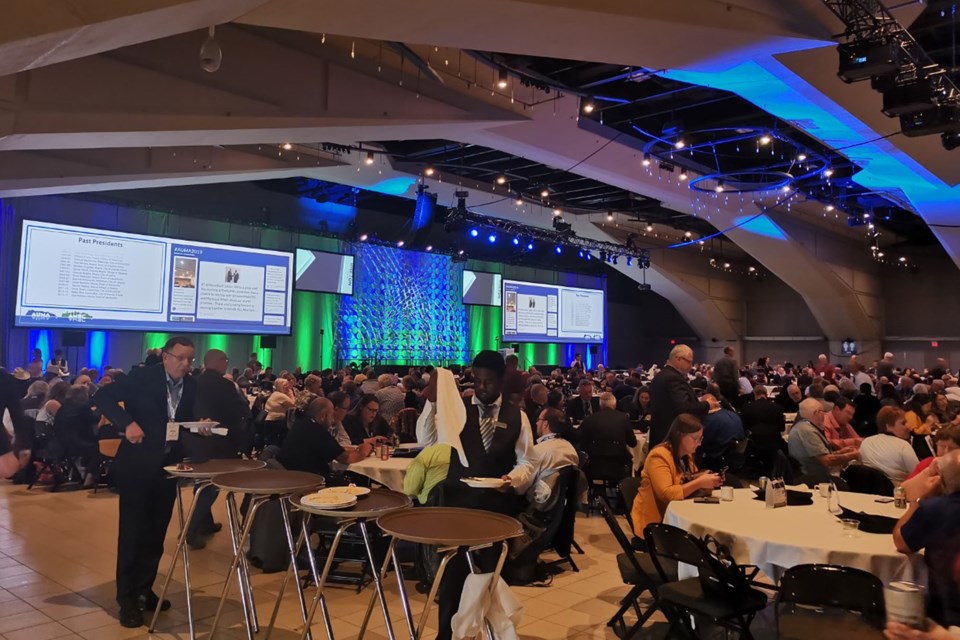As municipalities across the province continue to feel the fiscal crunch, a session at the Alberta Urban Municipalities Association (AUMA) annual convention this week focused on how communities can drum up more revenue.
While municipalities navigate how to address revenue in a rapidly progressing society that sees increased online shopping – and therefore decreased commercial assessments – home vacation rentals and ridesharing, they must learn to adapt to this changing environment.
Traditionally municipalities are limited to three options for revenue, AUMA executive members told attendees in Edmonton Sept. 25: property taxes, intergovernmental transfers and user fees.
As intergovernmental transfers are unreliable in the current climate and property taxes are regressive, the AUMA session advocated municipalities increasingly turn to user fees to generate revenue.
“This leaves property taxes and user fees as our primary source of revenue, and takes us to the heart of the challenge we’re all facing: how to raise enough money to deliver high quality public service and infrastructure that will attract and retain businesses and residents without undermining the competitive advantage,” said Edmonton councillor and AUMA cities over 500,000 director Tony Caterina.
Just increasing property taxes isn't adequate to generate revenue, given the demands of a modern municipality, Okotoks councillor and AUMA towns east director Tanya Thorn said.
The benefits of turning to user fees include generating revenue from some properties exempt from property taxes.
Peter Dumong, Calgary councillor and AUMA director of cities over 500,000, urged caution that pricing needs to be done with careful consideration of the impact on users, especially low-income residents.
Research from the University of Calgary showed user fees accounted for 40 per cent of revenue for Alberta municipalities in 2016, above the national average of 37 per cent, Thorn said. In 1988, the average was 22 per cent across Canada.
The session also examined examples of non-traditional user fees some municipalities are implementing, including Lethbridge’s per animal unit tax, to help fund maintenance of roads and bridges.
The City of Airdrie is generating revenue through property leases, and Edmonton is doing a comprehensive neighbourhood renewable plan based on local improvement charges.
And then there are new industries to be dealt with, such as Uber and Airbnb, which some municipalities are starting to regulate.
During question period, one participant described service fees as “just another tax” and asked if they are “another money grab.”
AUMA president Barry Morishita said there is a “lot more room” between “what we do and what we pay.”
“I don’t see it as a money grab as such as it is actually a transactional thing,” he said. “You get garbage service, you pay. You get recreation service, you pay.”
“I am a resident in my own community (and) I have to realize if I want that level of service, I may have to pay for it more directly,” he said. “That’s why asset management plans are important, that’s why linking costs to expenditures is really important. That’s why total cost accounting in municipalities is really important.”
In speaking with the Gazette, Morishita said he does not know many user fees that fully recover the cost to provide those services, because municipalities have to consider affordability.
“It’s trying to find that mixture. We’re advocating, don’t close the box, think about what a more equitable way is and if there is an opportunity to provide that,” he said. “We need to look at other models for sure.”
St. Albert is in the process of hunting for additional revenue sources and is looking at creating a utility corporation to do so. This idea was not mentioned in the session, and when asked if AUMA would advocate this as an effective revenue-generating tool, Morishita said capacity is a big issue for such a big venture.
Where there may be an opportunity for St. Albert to kick off a utility corporation, Morishita said there is very little opportunity for a village to do so.
“I applaud them for trying something new and innovative,” he said. “We think these are great things to consider and AUMA is part of that on our business side to help municipalities as well.”
St. Albert Coun. Ken MacKay attended the session and said it was “interesting, disappointing and encouraging” to see what some municipalities are doing around revenue.
“Disappointing in the fact we’re all under the gun in relation to the same challenges,” he said. “And really ... statutorily, we are kind of limited in what our options are.”
He added what he took away from the session was how municipalities can become more efficient, which MacKay said was a validation of what St. Albert is already doing around green tape reduction, Smart City initiatives and e-billing.




